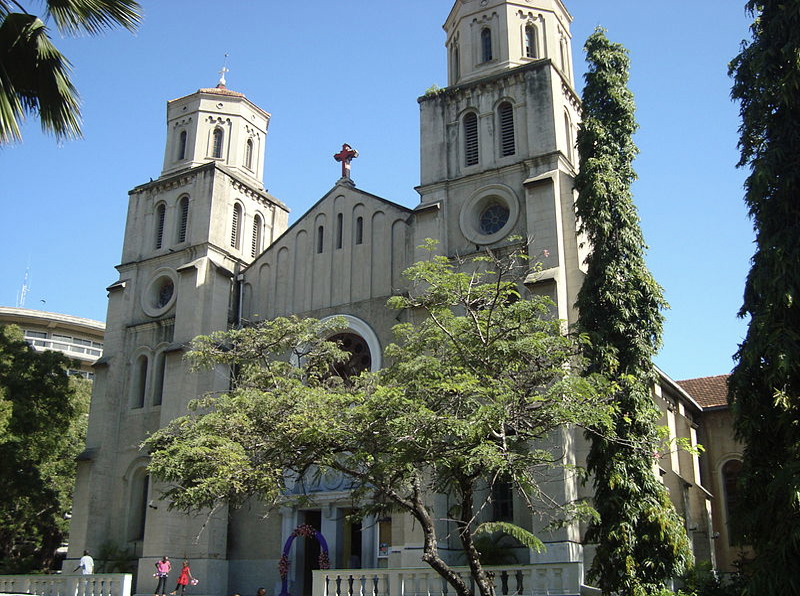In 1885 the first modern Catholics in Mombasa were encouraged by Monsignor Raoul de Courmont, Vicar Apostolic of Zanzibar, who sent from Zanzibar Father Alexandre le Roy, a Holy Ghost missionary disguised as an Arab to avoid religious rivalry, on an exploratory visit to Mombasa. In 1889 Le Roy established a small residence and chapel in a Goan’s house in the street Ndia Kuu. The first baptism took place on 14 August 1889 – that of Maria, the infant daughter of Diego and Natalie Pereira. The Ndia Kuu chapel and house soon became too crowded and a larger building was mooted. Le Roy stayed in Mombasa for five months before returning to Zanzibar. He went back to Mombasa in 1891 and bought five acres of land for £30 an acre where the present cathedral stands, in the Makadara area. The site’s bush was cleared and a mission was opened there in 1892. Le Roy then left, to become Vicar Apostolic of Gabon and eventually a bishop.
The church was completed on Easter Sunday 1898 but it was soon evident that it was too small, with the influx of Goans and Catholic Europeans at the turn of the twentieth century during and after the railway was built to Lake Victoria. In 1914 plans were drawn up to construct a new church by Brother Gustave Walter. The bishop approved his plans and the people pledged the necessary funds. Despite the outbreak of World War One, Walter and the Brothers Kilian Rettig and Claver Femandes laid the foundations in 1916 and began the cathedral’s construction. Six years later the imposing edifice was completed, in Romanesque style, adomed by two large towers that were visible from far out at sea. The interior of the church has a marble high altar, and there are stained glass windows depicting St Francis Xavier, patron saint of the Goan community, and St Patrick, patron saint of Ireland. The roof is interesting, being a facsimile of that of Westminster Cathedral in London. The trusses, each weighing a ton, are made of Indian teak. The thick walls are of coral stone. In 1955 Mombasa became a diocese with its own bishop – of Mombasa and Zanzibar.
Walter spent sixty-five years of his life in East Africa. ln 1910 he had spent a short time in Nairobi at St. Peter Claver’s Church, probably for construction work in the growing Kikuyu parish. Then in the mid-1930s he spent time at St. Austin’s, Nairobi. After World War Two he was assigned to the islands of Zanzibar and Pemba and he spent his declining years there. He lasted another twenty years there, yet he died in the place of his greatest construction project, Mombasa.


Recent Comments